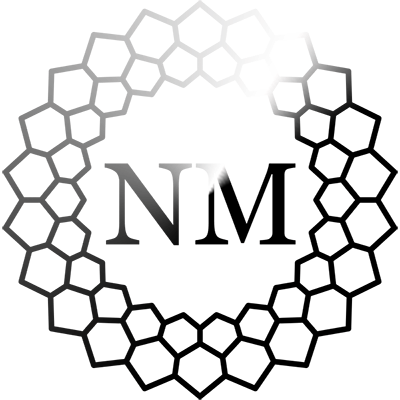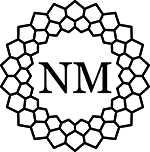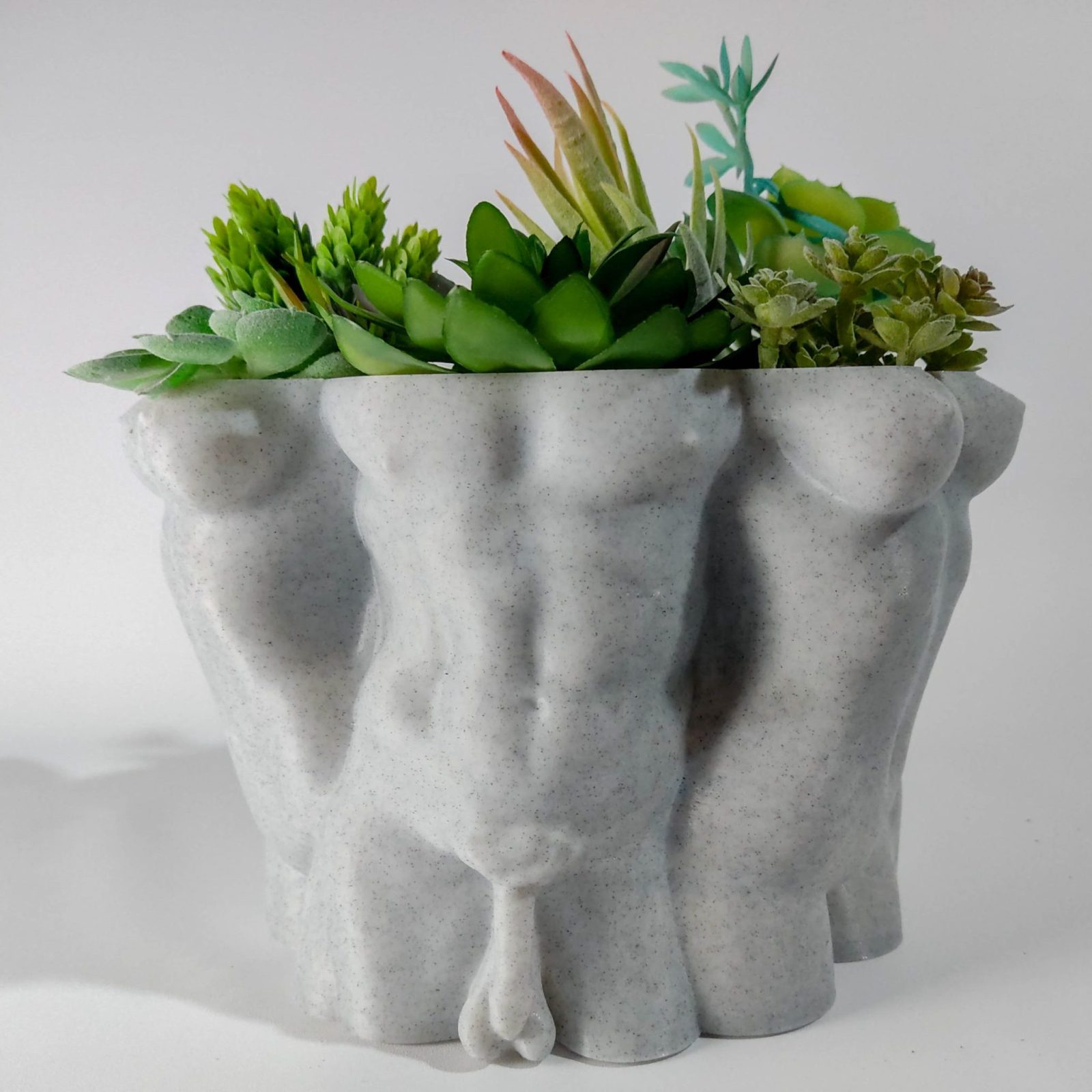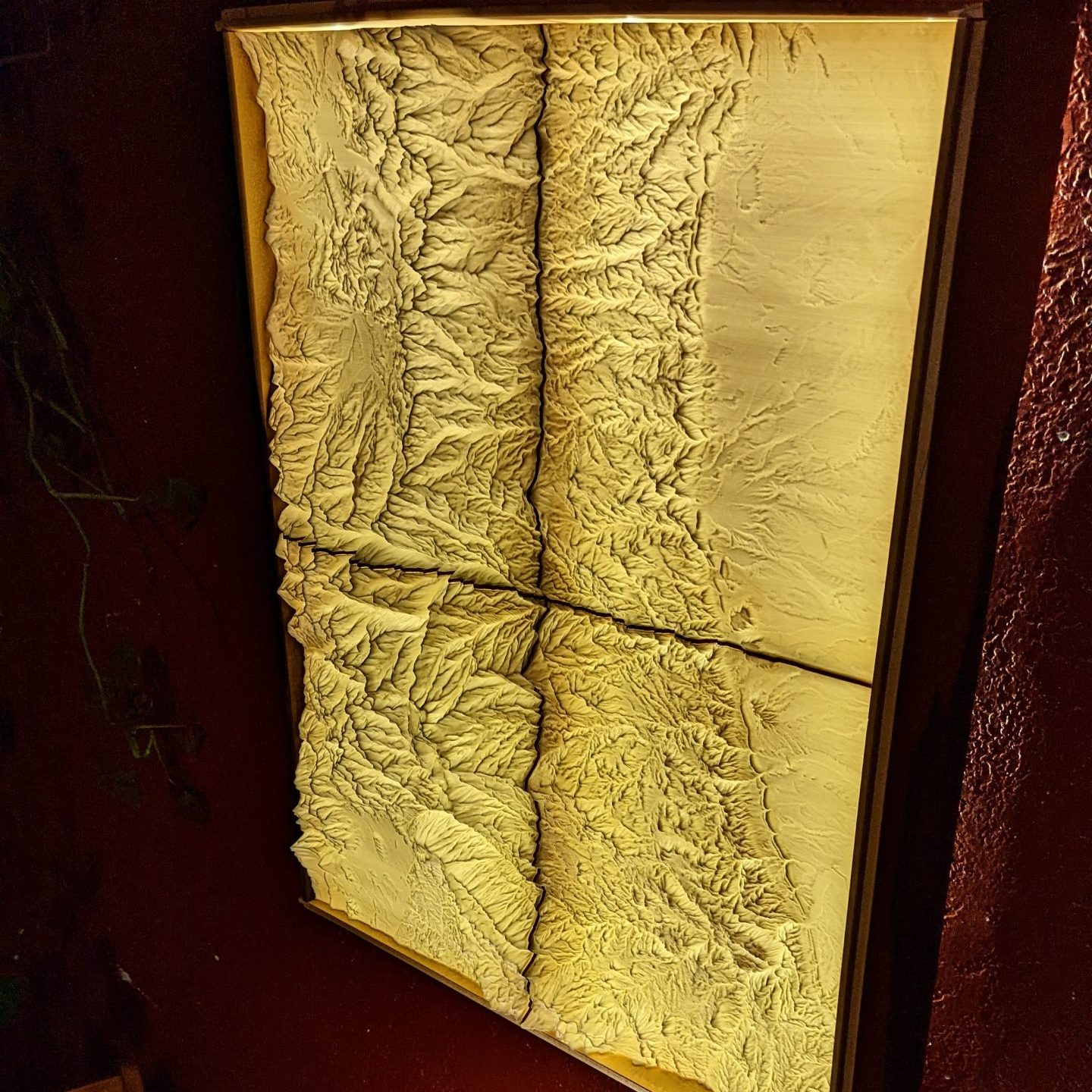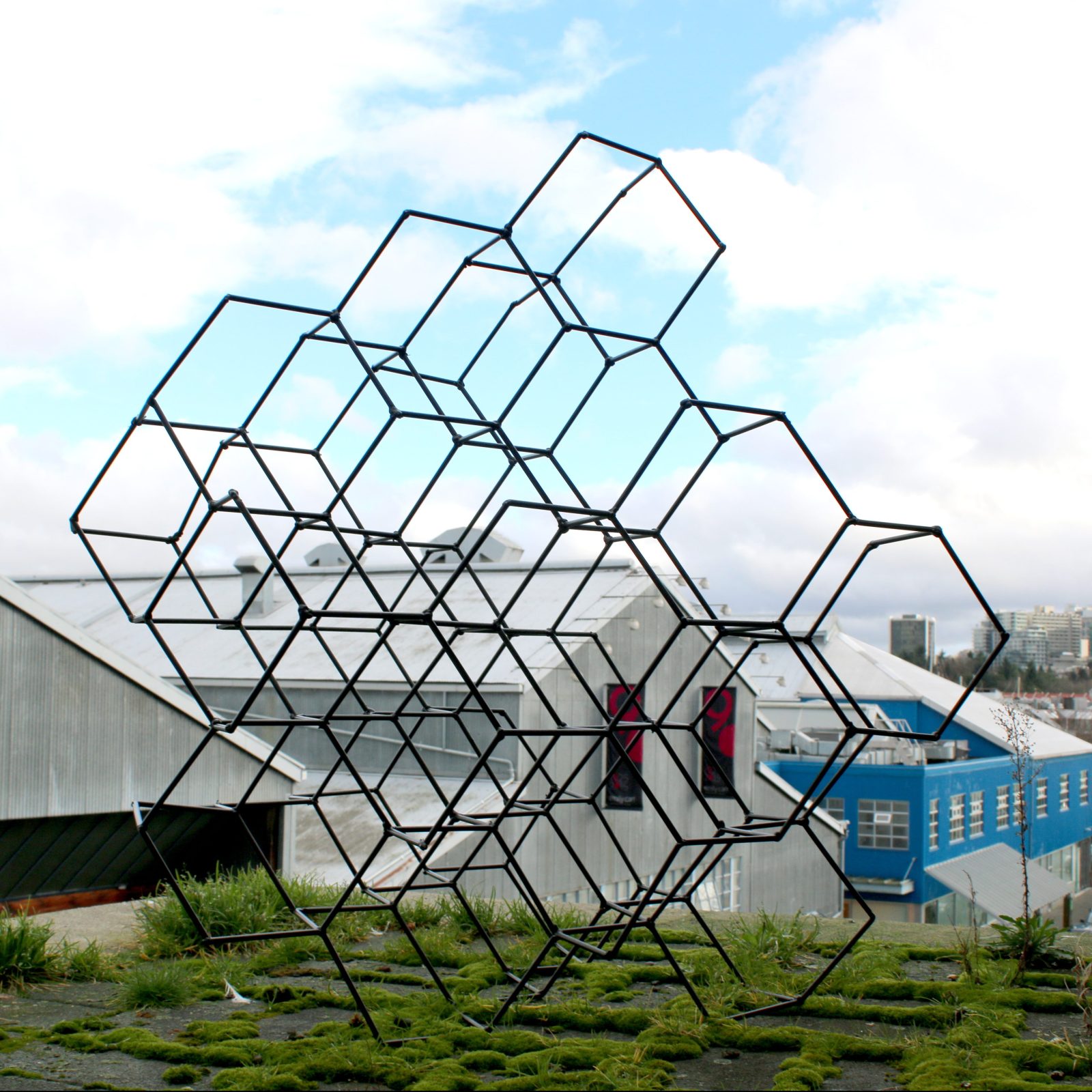Tetrahedral Lattice Helix is a large-scale kinetic sculpture exploring the relationship between structure, perception, and optical illusion. Standing two meters tall, the piece is composed of an intricate lattice derived from a tetrahedral cellular pattern, twisted upward in a graceful helical form that rotates to reveal a constantly shifting surface. As it spins, the open geometry of the sculpture generates a moiré effect, interference patterns that seem to shimmer, pulse, and morph as the viewer moves around it or as the piece turns on its axis.
The moiré effect—first observed in textile weaving and later formalized in the 19th century—describes the visual phenomenon that occurs when repetitive patterns are overlaid and slightly misaligned. The result is an illusion of motion, depth, or wave-like interference. In Tetrahedral Lattice Helix, this effect is created not through layered screens or films, but through spatial depth: light passing through the twisting lattice layers interacts with the viewer’s vantage point to create static illusions that appear animated. The piece seems to shimmer with internal energy, even when completely still.
The structure is based on a grid of hexagonal cells, 20 cells tall and 4 cells deep, hat spiral 1.5 full turns from base to top. The lattice pattern emerges from tetrahedral logic: a naturally strong and space-filling geometry found in molecular structures and crystallography. By twisting this pattern into a helical form, the sculpture references organic growth, double-helix DNA strands, and fluid motion captured in a frozen moment.
Fabrication was done entirely in-house using FDM 3D printing. The sculpture consists of five stacked sections, each precision-printed and post-processed to ensure structural alignment and visual continuity. The total print time exceeded 200 hours, with additional time spent on hand-finishing, gluing, and epoxy bonding to create a seamless join between parts. Despite being printed in modular components, the finished sculpture maintains the visual integrity of a single, continuous form.
As part of the design process for Tetrahedral Lattice Helix, a series of scaled-down prototypes were developed to explore how the lattice geometry could be optimized for visual interference and dynamic light play. One of the most successful iterations was a hand-held glowing version, resin printed in translucent photopolymer. This prototype became a critical tool for discovering how specific view angles, lighting conditions, and lattice densities could amplify the moiré effect,even when the sculpture is stationary.
Unlike the larger FDM-printed version, the resin prototype captured an exceptional level of detail, allowing for tighter tolerances and thinner structural members. When illuminated from within or behind, the miniature helix revealed a network of overlapping patterns that appeared to shimmer and pulse in response to subtle shifts in orientation, almost like a visual hologram trapped inside a physical form. Rotating the model slowly in hand unlocked unexpected corridors of light and shadow where the moiré illusion came to life with startling intensity.
This prototyping phase was essential in refining the full-scale sculpture. It allowed for rapid iteration of twist angles, cell proportions, and wall thicknesses while also confirming that the moiré effect wasn’t just an incidental outcome—it could be designed for. The handheld version functions both as a sculptural sketch and as a standalone piece: a glowing object that encapsulates the core optical phenomenon in a tactile, intimate format.
Beyond its gallery context, Tetrahedral Lattice Helix is uniquely suited for integration into live performance environments, particularly within electronic music and audiovisual shows. Its hypnotic moiré patterns, enhanced under dynamic lighting or strobing LEDs, can serve as a mesmerizing focal point on stage. When motorized and lit with directional or color-shifting light, the sculpture becomes an active visual instrument, echoing the energy and rhythm of a performance. Its geometric clarity and organic motion make it ideal for creating immersive, synesthetic experiences where sound, light, and form are in constant interplay. Modular and transportable, the sculpture has been designed with adaptability in mind, capable of being installed as a freestanding visual anchor or elevated to enhance stage presence.
